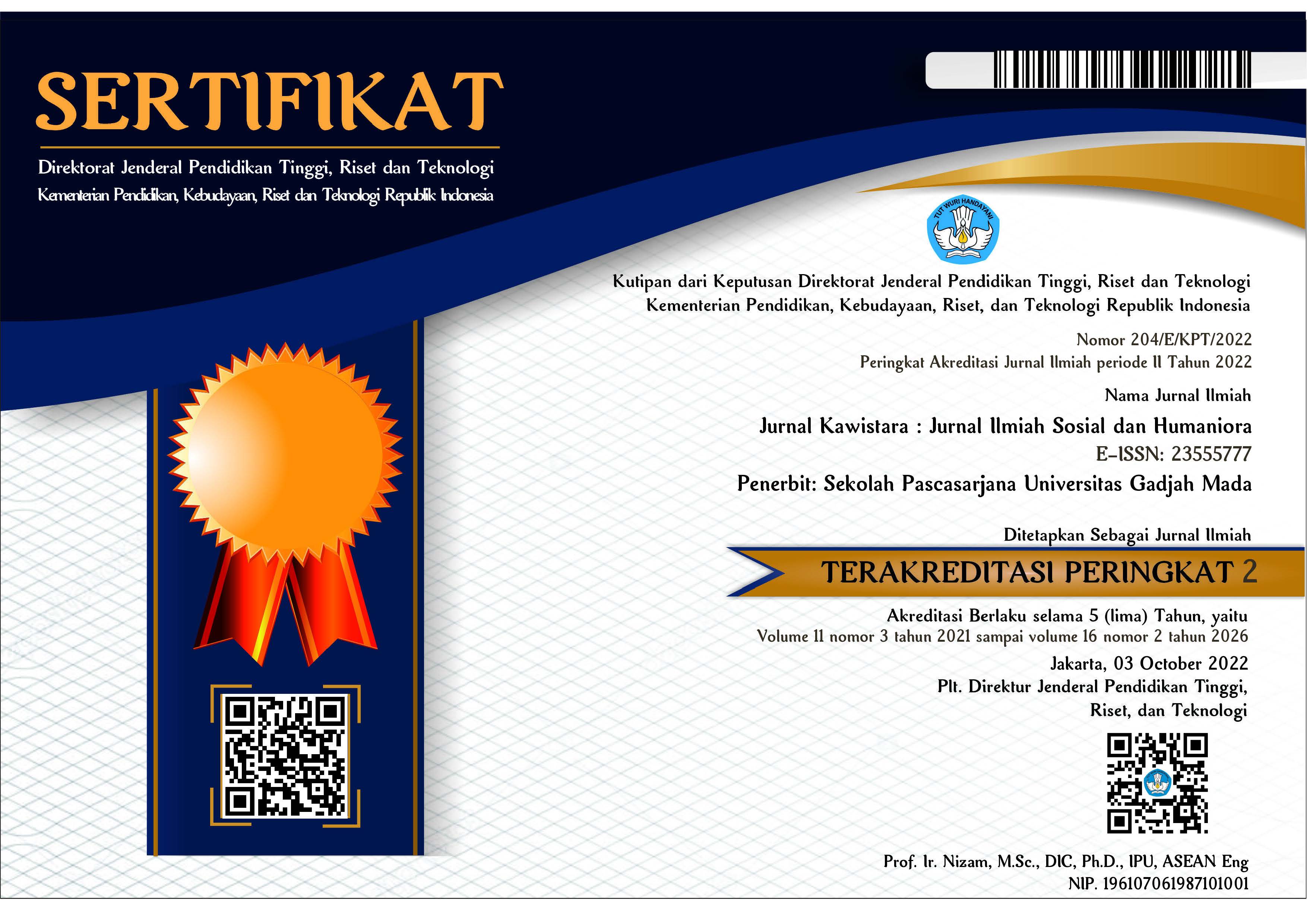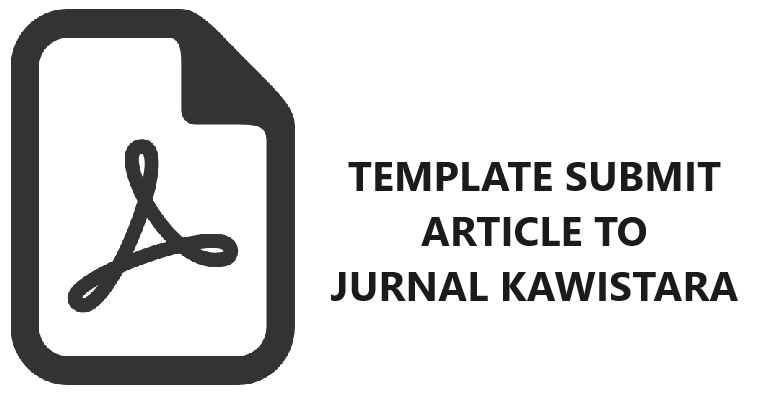SUSTAINABLE MANAGEMENT AND RURAL AGROPOLITAN DEVELOPMENT IN SENDANG VILLAGE OF TULUNGNAGUNG, EAST JAVA: A MULTIDIMENSIONAL ANALYSIS OF SUSTAINABILITY
Rita Parmawati(1*)
(1) Postgraduate, Brawijaya University
(*) Corresponding Author
Abstract
Keywords
Full Text:
PDFReferences
Akbar, M.S., A. Mukarromah, and L. Paramita. 2010. Classification of nutritional status of children with bagging ordinal logistic regression (survey case study lacks protein energy in Nganjuk district. Media Statistika 3(2):103-116.
Basri, I.S. and R. Arifin. 2010. Donggala Regency's agropolitan area in the context of regional development and as a center for the growth of new regions. Majalah ilmiah Mektek 12(1): 45-53.
BPS. 2018. What is the Human Development Index? Accessed on 27 Agustus 2018. <https://www.bps.go.id/subject/26/indeks-pembangunan-manusia.html>.
Buang, A, A. Habibah, J. Hamzah, and Y.S Ratnawati. 2011. The Agropolitan Way of Re-Empowering the Rural Poor. World Applied Sciences Journal 13(Special issue of human Dimensions of Development):1-6.
Cawley, M. 2009. Local governance and sustainable rural development : ireland’s experience in an eu context. Journal for geography 4(1):53-64.
Chambers, R. and G. Conway. 1991. Sustainable rural livelihood: practical concepts for the 21st century. Institute of Development Studies. Discussion Paper 296. http://community.eldis.org/.59b4ab37/dp296.pdf.
Chen, S., and M. Ravallion. 2012. More relatively-poor people in a less absolutely-poor world. Policy research working paper 6114. The world bank development research group
Chen, A. and S. Scott. 2013. Rural development strategies and government roles in the development of farmers’ cooperatives in China. Journal of agriculture, food systems, and community development 4(4):35-55.
Costanza, R., R. de Groot, P. Sutton, S. van der Ploeg, S.J. Anderson, I. Kubiszewski, S. Farber, and R.K. Turner. 2014. Changes in the global value of ecosystem services. Global Environmental Change 26(1):152-158.
DfID. 1999. Sustainable livelihoods guidance sheets. Livelihoods Research Centre. London.
Diehl., K., B. Burkhard, and K. Jacob. 2016. Should the ecosystem services concept be used in European commission impact assessment? Ecological Indicators 61(1):6-17.
Donohue, C. and E. Biggs. 2015. Monitoring socio-environmental change for sustainable development : Developing a multidimensional livelihood index (MLI). Applied geography 62(August 2015):391-403.
Ekaputra, Y.D., M.M.Sudarwani, and D. Fatmasari. 2014. Development of Settlement Facilities and Infrastructure to improve welfare through increasing community empowerment in Mantran Wetan hamlet, Magelang Regency. Majalah Ilmiah Universitas Pandanaran 12(28):120-141.
Ellis, F. 1999. Rural Livelihood Diversity in Developing Countries : Evidence and Policy Implications. ODI Natural Resource Perspectives. No 40.
Erenstein, O., J. Hellin, and P. Chandna. 2007. Livelihoods, poverty and targeting in the Indo-Gangetic plains: A spatial mapping approach. CIMMYT and the Rice-Wheat Consortium for the Indo-Gangetic Plains (RWC). New Delhi.
Fauzi, A. and S. Anna. 2002. Evaluation of the sustainability status of fisheries development: Application of the Rapfish approach (Case study of coastal waters of DKI Jakarta). Jurnal Pesisir dan Lautan 4(3):43 -55.
Fischer, A. and A. Eastwood. 2016. Coprodustion of ecosystem services as human-nature interactions – an analytical framework. Land use Policy 52(March 2016):41-50.
Gangwar, D.S., S. Tyagi, and S.K. Soni. 2017. A Conceptual framework of agroecological resource management system for climate-smart agriculture. International Journal of Environmental Science and Technology. https://doi.org/10.1007/s13762-018-1827-3.
Gallent, Nick and D. Shaw. 2007. Spatial planning, area action plans and the Rural-urban fringe. Journal of Environmental Planning and Management 50(5):617-638.
Hartono, T.T, T. Kodiran, M.A. Iqbal, and S. Koeshendrajana. 2005. Development of Rapid Appraisal for Fisheries (RAPFISH) Techniques for determining performance indicators for Sustainable Capture Fisheries in Indonesia. Buletin ekonomi Perikanan 6(1):65-76.
Hardjomidjojo, H., S. Raharja, and M. Chosyi’ah. 2016. Measurement of Sugar Industry Sustainability Index. Manajemen IKM. 11(1):89-96.
Hidayanto, M., S. Sabiham, S. Yahya , and L.I. Amien. 2009. Sustainability analysis of people's cocoa plantations in the Sebatik Island border area, Nunukan Regency, East Kalimantan Province.. Jurnal Agro Ekonomi 27(2):213-229.
Hudson, E.E. 2013. Beyond infrastructure: broadband for development in remote and indigenous regions. (special issue). The Journal of Rural and Community Development 8(2):44-61.
Indah, P.N., Z.A. Sam, and E. Damaijati. 2017. Identifying potential estate commodity for agropolitan development in Ponorogo. International Journal of Agriculture System. 5(1):60-68.
Johnston, M.P. 2014. Secondary data Analysis : A Method of which the time has come. Qualitative and quantitative methods in libraries 3(3):619-626.
Jones, L., L. Norton, Z. Austin, A. Browne, D. Donovan, B. Emmett, Z. Grabowski, D. Howard, J. Jones, and J. Kenter. 2016. Stocks and flows of natural and human-derived capital in ecosystem services. Land use policy 52(March 2016):151-162.
Kavanagh, P. and T.J. Pitcher. 2004. Implementing Microsoft Excel Software for RAPFISH: A Technique for The Rapid Appraisal of Fisheries Status. Fisheries Center Research Reports . 12(2)
Krantz, L. 2001. The sustainable livelihood approach to poverty Reduction: An introduction. Accessed on June 24 2019 < https://www.sida.se/contentassets/bd474c210163447c9a7963d77c64148a/the-sustainable-livelihood-approach-to-poverty-reduction_2656.pdf >
LeCompte, M.D., and J. Preissle. 1993. Ethnography and Qualitative Design in Educational Research. Academic Press. New York.
Mariyono, J. 2014. The economic performance of Indonesian rice-based agribusiness. Journal of administrative science & organization 21(1):35-43.
Mahardani, A.J. 2012. Implementasi Kebijakan Pengembangan Kawasan Agropolitan Sendang Kabupaten Tulungagung. Jejaring Administrasi Publik 2(8):125-130.
Nair, I. 2014. Challenges of rural development and opportunities for providing sustainable livelihood. International journal of Research in Applied, Natural, and Social Sciences 2(5):111-118.
Nugroho, I. 2008. Agropolitan : Suatu kerangka berpikir baru dalam pembangunan nasional. Journal of Indonesian Applied Economics 2(2):174-186.
Oryzanti, P., E. Rustiadi, Eriyatno, and N.T. Rochman. 2018. Policy priorities for the economic development in agropolitan area of Karacak Based on Mangosteen Agroindustry. American Journal of Applied Sciences 15(11):489-496.
Pitcher T.J. and D. Preikshot. 2001. RAPFISH: a rapid appraisal technique to evaluate the sustainability status of fisheries. Fisheries Research 49(3):255-270.
Pitcher, T.J., M.E. Lam, C.H. Ainsworth, A. Martindale, K. Nakamura, R.I. Perry, and T. Ward. 2013. Improvements to Rapfish: A Rapid evaluation technique for fisheries integrating ecological and human dimensions. Journal of Fish Biology 83(4): 865-889.
Sakir, M, D.T. Tikson, T. Haning, and G. Susanti. 2017. The effect of Agropolitan program to social economic conditions of the farmers. Scholars journal of economics, business and management 4(5):357-362.
Saleh, H., B. Surya, C.I. Musa, and H.M. Azis. 2017. Development of agropolitan area based on local economic potential (A case study: Belajen Agropolitan Area, Enrekang District). Asian Journal of Applied Sciences 5(1):173-88.
Samašonok, K. and B. Leškiene-Hussey. 2015. Creativity development: Theoritical and practical aspects. Journal of creativity and business innovation 1:19-34.
Schröter, M., D.B. Barton, R.P. , Remme, and L. Hein. 2014. Accounting for capacity and flow of ecosystem services : a conceptual model and a case study for telemark, Norway. Ecology indicators 36(January 2014):539-551.
Scott, G., L.E. Leritz, and M.D. Mumford. 2004. The Effectiveness of Creativity Training: A Quantitative Review. Creativity Research Journal 16(4):361-368.
Subadyo, A.T. and D. Poerwaningsih. 2017. Design of integrated infrasture development in Poncokusuo agropolitan region-malang, Indonesia. Ecology, Environtment, and Conservation 23(1):63-70.
Sulaiman, I.F., C.N. Hashim, M.B. Ibrahim, S.S.S. Hassan, and O.S. Oluwatosin. 2015. Impact of Creativity to Organizational Competitiveness. Journal of Humanities and Social Science 5(8):106-113.
Amalia, L. 2006. Penerapan Agropolitan dan Agribisnis Dalam Pembangunan Ekonomi Daerah.. Jurnal Inovisi 5(2):58-65.
van Zanten, B.T., P.H. Verbur, M. Espinosa, S. Gomez-y-Paloma, G. Galimberti, J. , Kantelhardt, M. Kapfer, M. Lefebvre, R. Manrique, A. Piorr, M. Raggi, L. Schaller, S. Targetti, I. Zasada, and D. Viaggi. 2014. European agricultural landscapes, common agricultural policy and ecosystem services: a review. Agronomy for Sustainable Development 34(2):309-325.
Von Haaren, C., C. Albert, J. Barkmann, R.S. de Groot, J.H. Spangenberg, C. Schroter-Schlaack, and B. Hansjurgens. 2014. From explanation to application: introducing a practice-oriented ecosystem services evaluation (PRESET) model adapted to the context of landscape planning and management. Landscape Ecology 29(8):1335-1346.
Wiggering, H., P.Weiβhuhn, and B. Burkhard. 2016. Agroecosystem services : an additional terminology to better understand ecosystem services delivered by agriculture. Landscape online 49:1-15 http://dx.doi.org/10.3097/LO.201649
Article Metrics
Refbacks
- There are currently no refbacks.
Copyright (c) 2020 Rita Parmawati

This work is licensed under a Creative Commons Attribution-ShareAlike 4.0 International License.
Jurnal Kawistara is published by the Graduate School, Universitas Gadjah Mada.











